The Impact of Social Media on Eating Disorders; and What You Can Do as a Parent.
Social media is now a daily part of life. For young people, it provides a way to communicate and a form of entertainment. As a parent, this can be concerning, especially if your teen is sensitive about their body image. This article will not only give you facts but arm you with the tools you need to guide and support the youths in your family online.
Of course, being online can be a positive thing. The internet is a great way to keep in touch with friends, learn, read, listen to music, and assist with homework. But it’s important to be aware of the potential risks of the online world to have the best experience.
Images children see through social media that promote unrealistic images, or glamorous negative and harmful behaviours can severely impact young people’s physical and mental health.
While social media alone is not usually the cause of an eating disorder, it can significantly worsen an existing eating disorder or trigger a new one. Particularly in youths already battling an eating disorder or struggling with feelings of anxiety or depression.
Knowing statistics and research can be helpful in understanding the issues and learning how to protect young people when engaging in social platforms.
How many youths use social media?
OfCom (UK) published the Children and parents: media use and attitudes report, which showed some interesting statistics:
- In 2020, nearly all children aged 5-15 went online
- More than four in ten children reported using social media before they reached the minimum age requirement
- 44% of 8–11-year-olds use social media
- 87% of 12–15-year-olds use social media
- Just over half of 12–15-year-olds have had some form of negative online experience
According to the NHS Great Glasgow and Clyde trust children aged between 5‐16 years in the UK have a total of 6.3 hours of screen time per day. This is made up of 2-3 hours watching television, 1-3 hours on the internet, 1-2 hour playing video games and over an hour on mobile phones (not talking).
Needless to say, children, tweens, and teenagers are active online.
How are social media and eating disorders connected?
Several studies have investigated the impact of social media on eating disorders. Published in the Journal of Eating and Weight Disorders, a study of 680 females identified that higher Instagram usage was associated with a greater prevalence of orthorexia Nervosa symptoms. The researchers from the study define orthorexia Nervosa as an unhealthy obsession with eating healthy food.
Published in the journal Body Image, researchers from the University of Surrey and the University of Padova in Italy found that young women exposed to sexualised imagery had increased body dissatisfaction. A 2021 study reinforces that excessive social media exposure is associated with greater odds of developing an eating disorder. In particular, ‘thinspiration’ social media content is noted to play a particular role in this connection.
More recently, 55% of people with an eating disorder reported that increased time spent online due to the pandemic worsened their symptoms.
These are just a few examples of studies highlighting the negative impact social media can have on body image and eating disorders. But why does social media have such an influence?
Building un-realistic perceptions
Social media platforms contain vast quantities of unrealistic body images and videos.
In the past, hashtags like #thinspiration or #proana were popular, but most social media platforms have managed to ban the most common ones. However, users can still get around these banned hashtags by changing the spelling. This means problematic hashtags related to disordered eating content are still at large.
Many people feel they can’t even post a picture of themselves without editing it. A survey carried out by Girl Guides (2020) showed that 34% of women aged 11-21 will not post a photo of themselves unless it has been edited.
Countless images of influencers, models, and celebrities provide unrealistic physical ideals for all genders. Anorexia and bulimia are also glamorised on platforms some social media platforms, with some users providing instructions on extreme dieting methods.
If a user is actively searching for content around disordered eating behaviours, social media can provide a private way to engage with this type of behaviour. However, it’s important to mention that many online platforms have put safeguards in place to counter this type of activity. People with eating disorders often stick to small social groups and struggle with some aspects of socialising.
Eating disorders are extremely common in adolescents, affecting 10% of young women. It’s important to understand what treatment options are available. To help improve the chances of recovery, treatment varies from therapy, education and medication. However, if long-term care is needed, the best option could be residential treatment. Utilise online resources to find reputable eating disorder treatment centres around the world.
Feelings of exclusion and cyberbullying
Peer influences and appearance are significant at this age. Teens can become very focused on how they are perceived online. Aside from unrealistic images, social media can subconsciously cause feelings of exclusion. With everyone sharing photos of their life, parties, and events, it can be challenging for teens to see something going on that they haven’t been invited to. FOMO (fear of missing out) is a very real phenomenon.
Feeling left out can lead to destructive thoughts like ‘I would have been invited if I was thinner or had that new outfit.’ These can quickly enter the mind of a young person who is already underconfident or struggles with their body image. This can lead to negative eating behaviours, which teens may believe will help them ‘fit in.’
Alongside exclusion, cyberbullying is also a genuine concern. Bullies can send, post, or share harmful or mean content about someone else. It can take the form of being negative about someone’s appearance and encouraging them to partake in an extreme diet. Cyberbullying can occur on a range of social media and messaging platforms. Being online, it’s hard for victims to ignore. Cyberbullying can be constant and with anonymity from being online, making it difficult to address and resolve this issue.
What you can do as parents
Realistically you can’t keep your teens from social media. And, as mentioned at the beginning, there are a lot of positives to social media and online activity. Social media is a great way to connect with peers, develop friendship bonds, and learn about societal and cultural issues. It can broaden your understanding of the world and help enhance digital media skills. When removed from family and friends, social media can be a way of keeping in touch and assisting relationships to stay strong. For some, it is also a place to seek support – where they might not feel confident speaking about a problem face to face.
Most platforms aim to make social media as safe as possible, with dedicated teams focused on youth safety. As mentioned earlier, many hashtags associated with eating disorders have been banned. Instagram aims to actively remove pro-anorexia content, or content that contains threats, hate speech or targets individuals to degrade or shame them.
But, it is not always possible to stop accounts promoting extreme dieting and eating disorders. Although pro-anorexia communities have been online for years, even before Instagram, the broad reach of Instagram among young people makes it more challenging to monitor and crackdown on. And it is crucial to recognise the negative impact social media can have – especially on teens susceptible to eating concerns.
The key is to engage with your teenager and guide them to use social media responsibly and with context. Here are a few tips on where to get started:
- Discuss media messages. Social media can message that only certain body types are acceptable, so encourage your teen to talk to you and ask questions about this. Ask them what they think about a story they are reading or a photo they are looking at. Where did it come from? Does it sound and look real? Talk about algorithms and how they work. Explain, if you tend to follow a particular viewpoint or topic, you are more likely to see more of the same. Not necessarily a balanced view.
Have an open conversation about what a real photo and what a heavily edited image looks like. Explain advertising and marketing and how it can make a product look great, but it is not necessarily factual. Raise awareness around content that can be harmful.
- Encourage positive self-esteem. Focus on celebrating (vocally) your teen’s qualities outside of their physical image. Celebrate their accomplishments, and harness their talents. Praise effort instead of outcome. Help them to focus on the positives and to do things they enjoy without fear or judgement from their peers.
- Promote a healthy body image. Talk to your teen about their body image and discuss that healthy body shapes vary. If you see them looking at a specific picture of a celebrity or influencer, sports personality or actor, talk about how realistic it is (or isn’t). Help them recognise and understand the pressures that social media can put on body image perceptions.
- Help your teen to find positive, healthy eating influencers. If your teen wants to follow accounts online about health and body image, then help them find positive ones. Hashtags like #bodypositive are better than ones like #fitspo.

Change the focus of their social media feeds by looking for influencers that promote healthy eating habits, wellbeing, and positive body image.
- Promote offline connections. Highlight that there is a world outside of social media. Encourage sports clubs, extracurricular activities, and quality face-to-face time with friends. You can also encourage new opportunities such as getting a part-time job or volunteering which also helps with meeting new people. Promoting ‘unplugged’ time at home can also be positive for the whole family.
Using technology smartly and safely
Although social media platforms are trying to moderate and encourage a culture of reporting pro-eating disorder content, it continues to be impossible to remove it entirely.
Even anti-pro-anorexia content has its concerns. A study published by the National Institute of Health in January 2021 stated that “these safer videos paradoxically lead the users to emulate these ‘guilty’ behaviours.” There will always be harmful hashtags that remain searchable as users find a loophole to replace banned ones.
The best way to support your teen in dealing with content that promotes an unrealistic body image is to teach them about using social media wisely. Widen their knowledge about what it really means to be healthy, and promote open discussion about unhealthy diet and fitness choices. By encouraging them to seek body-positive influencers and fuelling their self-esteem, you can help them navigate the online world of unrealistic beauty standards and unhealthy dieting fads.

Contributed by Chris Harley
Writer for internetmatters.org


